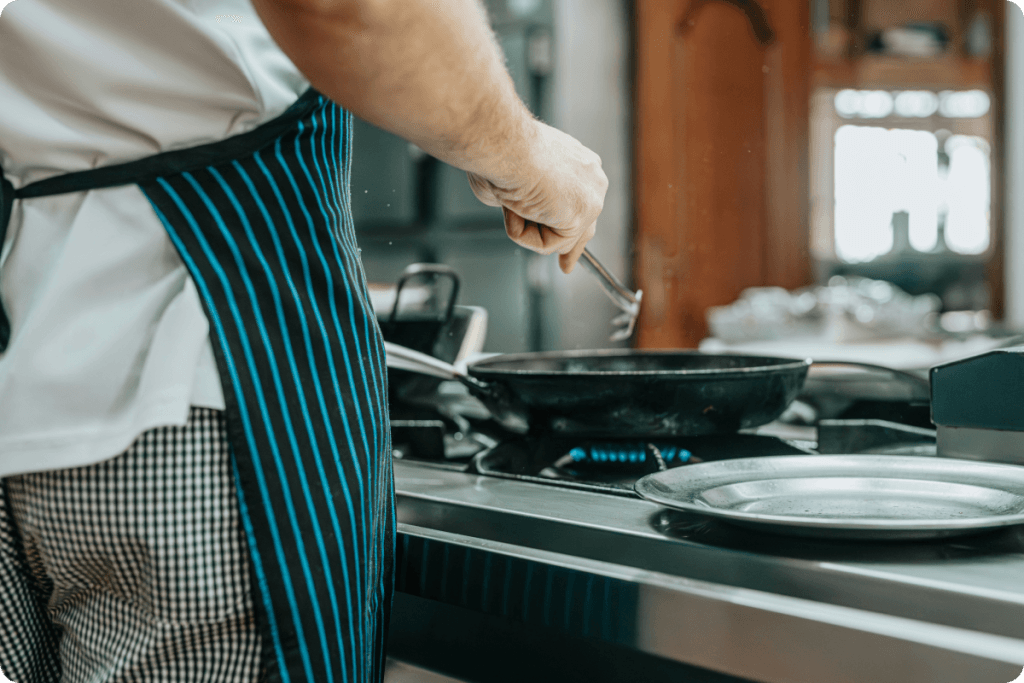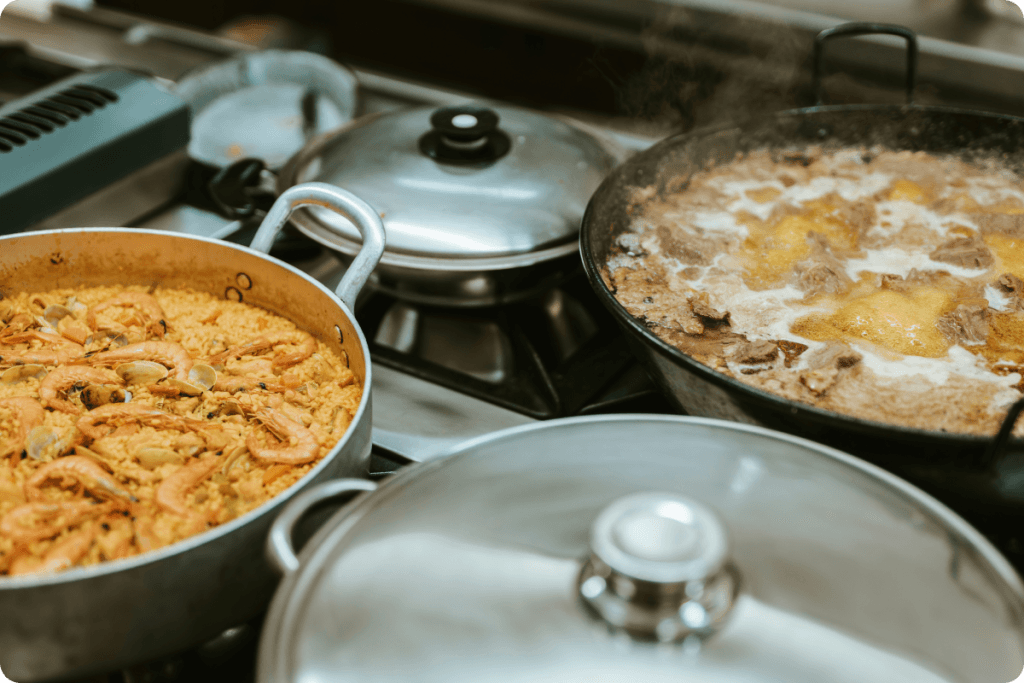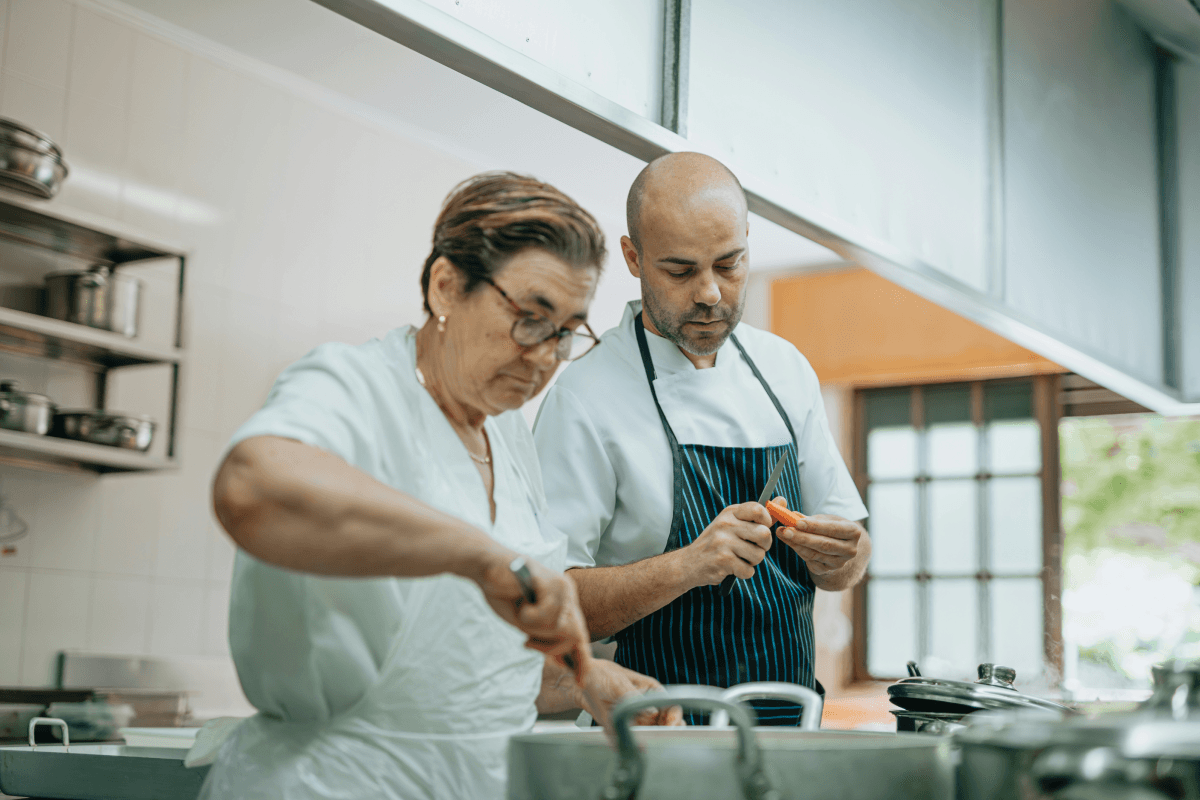“I thought I just needed enough to get the place looking good.” Sounds familiar?
The reality of starting a new restaurant hits fast: there’s licensing paperwork and fees, staff recruitment and training costs, setting up your POS and booking systems, marketing spend to actually get customers in the door, and a stack of compliance items you may not even have guessed were on the list (hello, fire safety upgrades).
One cafe group in Melbourne thought their council health inspection was a formality — until they were told they needed to spend another $15K retrofitting grease traps and sinks they hadn’t budgeted for. That was after they’d already planned their soft opening.
Lesson? Always budget for the “unknowns” — because they’re not the exception, they’re standard.
What are restaurant startup costs, exactly?
Opening a restaurant is more than just finding a space and serving great food. It’s a serious investment that starts long before your first customer walks through the door.
For anyone planning to launch or level up a venue in Australia, getting a real handle on your startup costs is one of the smartest moves you can make.
Startup costs are all the expenses you’ll need to cover before you officially open your doors — plus a little buffer to get you through those crucial first few months of trading.
Think of it in two buckets:
- Pre-opening costs: Things like securing your lease, fitting out your space, buying kitchen equipment, licensing, and initial marketing.
- Early operational costs: Wages, stock, utilities, and other day-to-day expenses you’ll need to float until your business becomes cash flow positive.
In other words, building the dream comes with a cost – having enough runway to survive and thrive once you launch.
Major startup cost categories to factor in
When you start mapping out your restaurant budget, it’s easy to focus on the big obvious numbers — but real success comes from getting across all the smaller (and sometimes hidden) costs too.
From working with thousands of venues across Australia, New Zealand and Canada, we’ve learned one thing: the more detailed your cost planning, the fewer surprises down the track.
Here’s a breakdown of the major startup costs to factor in when opening a new restaurant.
Lease and property costs
Finding the right location is critical — but it’s also one of the biggest upfront expenses you’ll face.
Upfront deposits and bonds
In Australia, it’s common for landlords to ask for an upfront rental bond. Depending on the size and location of your venue, that could be tens (or hundreds) of thousands of dollars tied up before you even begin fit-out.
Legal fees for lease negotiations
Trust us: it’s absolutely worth getting a lawyer who knows hospitality leases to review your agreement. We’ve seen too many owners get stung by hidden clauses around outgoings, maintenance, or restrictions on trading hours.
Fit-out incentives
Sometimes landlords offer a “fit-out contribution” — these are essentially cash or rent-free periods to help you build out your space. Always ask for it. Even if it’s not advertised, there’s often room to negotiate if you can show you’re investing heavily in the property.
Fit-out and renovation costs
This is where dreams meet reality — and where a lot of startup budgets blow out.
Interior design and layout
From budget-friendly IKEA hacks to high-end custom builds, your design choices will have a huge impact on your spend.
Renovation costs vary depending on your cafe’s size, materials, and labour — but as a ballpark, most small to mid-sized cafés in Australia will set you back somewhere between $80,000 and $170,000 (not including equipment like displays or signage). For larger venues, you’re likely looking at $250,000 or more. So yes, that price tag adds up fast.
Kitchen build out
Building a compliant commercial kitchen isn’t just plonking down a few ovens. There’s also the ventilation systems, grease traps, non-slip flooring, drainage — it’s serious infrastructure.
Plenty of projects blow budgets here because early quotes didn’t account for plumbing and mechanical needs. You wouldn’t want to be in that situation so think ahead for kitchen build outs.
Accessibility compliance
Australia has strict accessibility rules around wheelchair access, toilets, and entryways. Look at this as a savvy investment — accessibility is not just legally required, it’s good hospitality.

Equipment and appliances cost
You can’t run a restaurant without gear. But again, what you choose (and how you buy) can swing your costs massively.
Kitchen equipment
Ranges, fridges, dishwashers, combi ovens — depending on your concept, a fully fitted commercial kitchen can easily set you back $100K or more.
Front of house
Think beyond tables and chairs. You’ll also need POS systems, reservation software, and maybe even AV systems if you want to run live music or events.
Leasing vs buying
Leasing equipment can ease upfront cash flow pressure, but you’ll often end up paying more long term. For big-ticket essentials (like ovens or fridges), buying good-quality second-hand gear is often smarter than leasing shiny new items that lose value fast.
One Brisbane cafe owner we worked with picked up a fully fitted second-hand coffee setup — espresso machine, grinders, knockboxes — for less than half the retail price. The catch? They had to transport and service it themselves. Totally worth it, but a good reminder to budget for extra steps like installation.
Licenses, permits and certification costs
Getting compliant isn’t glamorous but without the right licenses and permits, you’re not opening. Consider this a non negotiable.
Food business registration
Every local council has its own process and costs. In Australia, restaurant owners typically need to submit floor plans, menu details, and a food safety plan.
Liquor licensing
This is a big one. Liquor licensing and rules vary hugely across states and councils. In Victoria, for example, a basic liquor licence application can take up to six months — longer if there’s community opposition.
RSA (Responsible Service of Alcohol) training
Every staff member serving alcohol must have up-to-date RSA certification. Budget for training courses and paid time off for staff to complete them.
Health and safety inspections
Councils won’t just tick a box when it comes to inspections— they will inspect kitchens, storage areas, bathrooms, and waste management before granting approval. This means everyday you’re waiting on approvals is a day you can’t open for business.
Start paperwork early because seriously, it almost always takes longer than you expect.
Staffing and labour costs
Hiring a team is one of the biggest early investments you’ll make, and it starts way before you open the doors.
Hiring before launch
You’ll need to bring in key players — chefs, venue managers, baristas, FOH leads — at least a few weeks before launch. They’ll help shape the culture, build systems, and get the venue humming. Reality check: That’s weeks of wages before you see a single sale.
In 2025, restaurant staff are paid an average of $22 per hour, and this scales up for senior roles. According to Payscale, head chefs make at least $70k annually, while restaurant managers take home a slightly lower average of $65k. Account for these in your pre-opening books.
Training costs
Whether you’re running fine dining or fast casual, pre-opening training is essential. Staff need time to learn the menu, tech, service flow, and compliance protocols like RSA and food safety.
Our take? Rushing this part is risky. We’ve seen amazing venues lose guests in week one because systems weren’t tested or teams weren’t prepped. That kind of first impression sticks in the restaurant industry — one night of bad service and reviews can cost you a lot more than sufficient preparation.
Payroll tax, superannuation, and WorkCover
As an employer, the tax and superannuation you’re obligated to cover includes:
- Superannuation: 11% as of 2025, on top of base wages.
- Payroll tax: Kicks in once your total wages pass the state-specific threshold. Differs by state — in NSW it’s $1.2 million per year.
- WorkCover insurance: Mandatory and varies by industry category and state.
Initial inventory costs
Now that your team’s in place, you can’t open with empty shelves — and that first stock-up is always bigger and more expensive. Think about:
Food and beverage stock
Your first few orders will cover soft openings, early service, and test runs. That includes pantry basics, fresh produce, dry goods, and beverages (alcoholic and non-alcoholic, depending on your concept and license).
Smallwares
Crockery, glassware, pans, tongs, knives — it all adds up. Most venues underestimate how much they’ll need just to survive a weekend without running to the shops mid-service.
Cleaning supplies and disposables
It’s not just dish soap. You’ll need bins, liners, gloves, takeaway containers, food wrap, sanitiser, colour-coded cloths, and more — all part of staying compliant with food safety standards here in Australia.
Pro tip: Even a small venue should plan for at least $5–$10k in opening inventory, depending on concept. Double that for larger operations or venues with bar programs.
Restaurant marketing and launch costs
No matter how good your food is, people need to know you exist to be your customer. Marketing is one of the most important, and too often underfunded, parts of opening a restaurant.
Branding, signage, website, social media setup
A great logo and a clean website still go a long way. And yes, you need to be on Instagram and Google Maps before you open. First impressions matter, and your online presence is often your first “table for one.”
Coming from a marketing team that does this on the daily: consider getting professional help in this department. With all the other aspects of running a restaurant, the last thing you want is to have to worry about replying to comments, or setting up profiles.
Opening events
There’s a difference between a soft opening (limited friends/family service to test systems) and a grand opening (public-facing event or promotion). You’ll want to budget for food, drinks, staff, and possibly PR or media outreach.
Online reservation and booking platforms
That’s us! You’ll need a reliable restaurant reservation system to handle bookings from day one — not just for table management, but to start building a customer database you can retarget, and keep service running smoothly.
With Now Book It, you can manage reservations, reduce no-shows, handle walk-ins, and start capturing guest data from day one — all in one place. If you have the extra budget, rope in our AI receptionist Sadie, who handles all your calls so you can focus on making the in venue experience great.

Restaurant startup cost estimates
Now, let’s talk real numbers. One of the most common questions for someone thinking about opening a venue: “How much should I budget?”
Short answer? It depends on your concept, location, and how fancy you want to go. But here are some rough ballpark figures we’ve researched across Australia:
- Small café or takeaway spot: Approx. AUD $150–$300k
Think minimal seating, compact kitchen, simple fit-out, and lean staffing. Perfect for first-time operators or fast casual concepts. - Full-service restaurant or mid-range bar: AUD $400k–$1m+
Includes kitchen build, full dining room, fitout, liquor licensing, marketing, and a solid pre-opening team. Expect to land in the higher end of the range in cities like Sydney or Melbourne. - High-end or custom fit-out venues: AUD $1m and beyond
We’ve worked with venues who spent over $2M before opening — especially those in high value heritage buildings or custom-designed spaces. Designer interiors, open kitchens, private dining rooms… it adds up fast.
The other cost that’s often overlooked: your cash buffer.
You’ll need enough in the bank to cover at least 3–6 months of operating expenses while you ramp up. Most venues don’t break even right away. There are slow days, surprise maintenance costs, staffing gaps, supplier hiccups — the usual restaurant industry rollercoaster.
The venues that plan for a slower runway always lasts longer than the ones that expect to be profitable in week two.
Financing your restaurant startup
Unless you’ve won the lottery (or are already making good money from an existing business), you’re probably not funding this solo. Here are the most common ways Aussie restaurant owners pull the funds together:
Bank loans
Traditional, structured, and… a bit old-school. You’ll need a solid business plan, cashflow forecast, and often personal security to get approved.
Pro tip: Having an experienced business partner or accountant involved can help your application go further.
Private investors or silent partners
Common in hospitality, especially if you’ve got industry cred. In exchange for upfront capital, investors would usually want a percentage of profits or ownership.
Just be clear on roles, responsibilities, and expectations and pen the deal before you consider it done — too many handshake deals go sour down the line.
Crowdfunding or community support
A growing trend, especially for niche or neighbourhood venues. Great way to build buzz and loyalty early. But it takes serious effort to run a successful campaign — it’s not “free money.”
Government grants and support
Australia often has small business grants at the state and federal levels — especially for regional development, training, or innovation. They’re not always hospitality-specific, but it’s worth checking your state’s small biz department.
As an example, we recently ran a grant campaign in partnership with Queensland Tourism Industry Council, who offered eligible restaurants a $2,000 digitalisation subsidy, allowing them to sign up for our online booking software at no extra costs.
Equity sharing
If you’re bringing in partners, think carefully about how much equity to give away. Make sure the split reflects more than just cash — consider experience, sweat equity, long-term involvement, and future plans.
The cost for starting a restaurant is high — but so are the rewards
Look, we won’t sugar-coat it — opening a venue is a big financial and emotional leap. But with clear planning and a solid budget, it is achievable. More than that, it’s incredibly fulfilling.
Here’s our advice to cap off this guide:
- Build a detailed startup budget and cashflow forecast.
- Don’t forget your buffer — things always cost more than you expect.
- Talk to local experts: accountants, hospitality consultants, lawyers.
- And make sure your tech stack is cost-friendly, and working for you from day one.
Opening a venue is hard — but running one is even harder. After the fit-out, the permits, and the soft launch… the real work begins.
The venues that thrive long-term aren’t just passionate, they’re smart about systems, data, and guest experience from day one. That’s where we come in.



